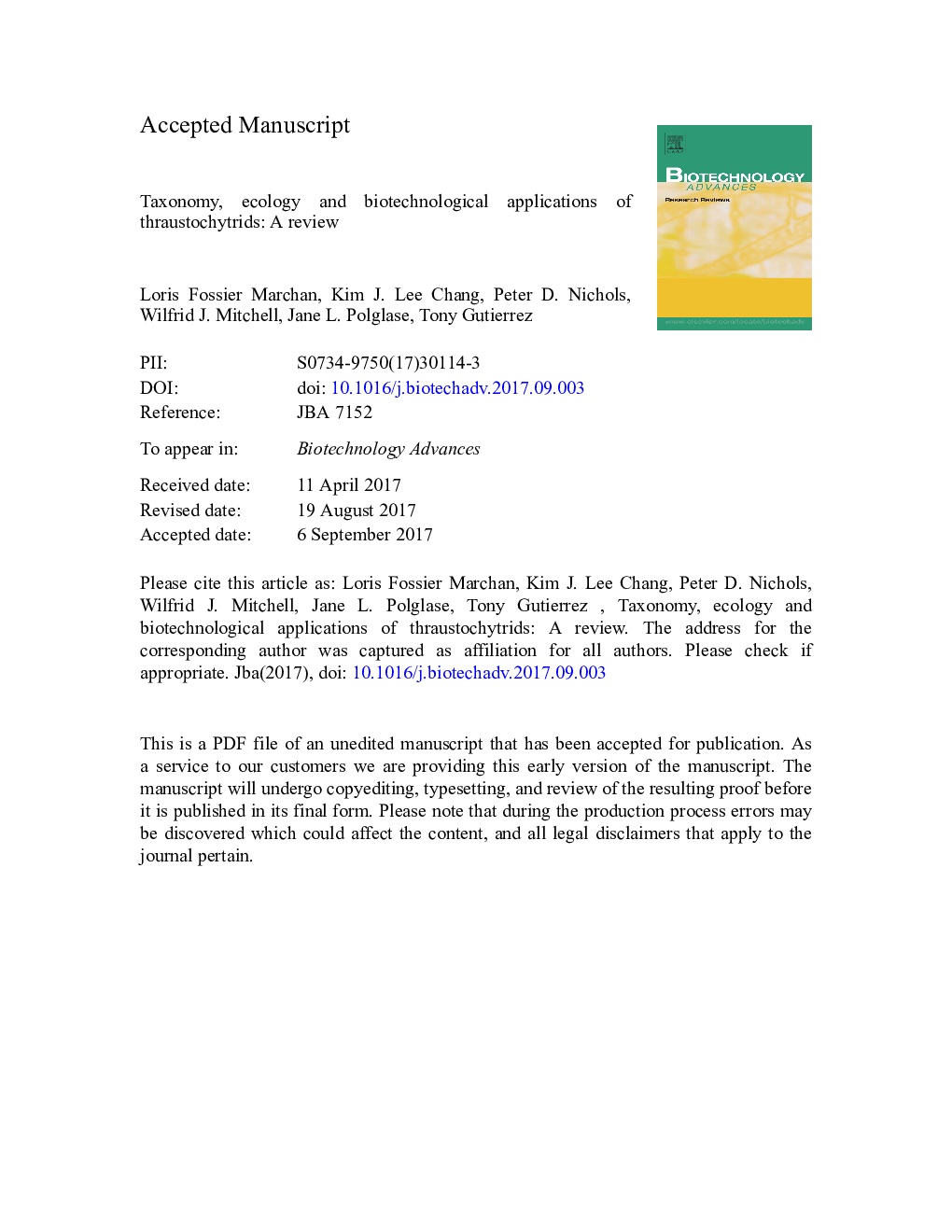| Article ID | Journal | Published Year | Pages | File Type |
|---|---|---|---|---|
| 6486669 | Biotechnology Advances | 2018 | 66 Pages |
Abstract
Thraustochytrids were first discovered in 1934, and since the 1960's they have been increasingly studied for their beneficial and deleterious effects. This review aims to provide an enhanced understanding of these protists with a particular emphasis on their taxonomy, ecology and biotechnology applications. Over the years, thraustochytrid taxonomy has improved with the development of modern molecular techniques and new biochemical markers, resulting in the isolation and description of new strains. In the present work, the taxonomic history of thraustochytrids is reviewed, while providing an up-to-date classification of these organisms. It also describes the various biomarkers that may be taken into consideration to support taxonomic characterization of the thraustochytrids, together with a review of traditional and modern techniques for their isolation and molecular identification. The originality of this review lies in linking taxonomy and ecology of the thraustochytrids and their biotechnological applications as producers of docosahexaenoic acid (DHA), carotenoids, exopolysaccharides and other compounds of interest. The paper provides a summary of these aspects while also highlighting some of the most important recent studies in this field, which include the diversity of polyunsaturated fatty acid metabolism in thraustochytrids, some novel strategies for biomass production and recovery of compounds of interest. Furthermore, a detailed overview is provided of the direct and current applications of thraustochytrid-derived compounds in the food, fuel, cosmetic, pharmaceutical, and aquaculture industries and of some of the commercial products available. This review is intended to be a source of information and references on the thraustochytrids for both experts and those who are new to this field.
Keywords
Related Topics
Physical Sciences and Engineering
Chemical Engineering
Bioengineering
Authors
Loris Fossier Marchan, Kim J. Lee Chang, Peter D. Nichols, Wilfrid J. Mitchell, Jane L. Polglase, Tony Gutierrez,
